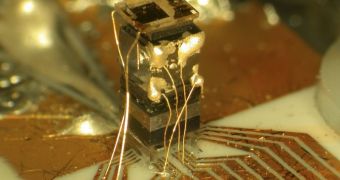Some of the first atomic clocks were actually masers, commonly known as microwave lasers, that had additional equipments attached to them. Today, however, some of the most accurate atomic clocks work on the principle of atomic absorption spectroscopy of cold atoms. In fact, time is defined in the International System of Units on the basis of the transition of cesium-133 atom. A second represents the time required by a cesium-133 atom to emit 9,192,631,770 cycles of radiation while suffering a transition between two levels of energy.
Nowadays, atomic clocks are being widely used in multiple applications, starting from standard frequency generators to interferometry techniques in radioastronomic observations and Global Positioning Satellites and navigations systems in general. While most are rather bulky for commercial applications, the National Institute of Standards and Technology presented, in 2004, an atomic clock design scaled down to the size of a small chip, one hundred times smaller than any previous atomic clock design, able to work on only 75 mW of power, which may eventually replace the expensive cesium atomic clocks.
On the other hand, researchers from the Physikalisch-Technische Bundesanstalt argue that optical clocks are the way to go, as they work in the visible spectrum of light and have much higher oscillating frequency than microwave cesium atomic clocks, ultimately translating into a more accurate time piece. The device developed by interfering two separate laser beams which retain strontium atoms in the interference pattern.
While being trapped in the interference pattern, strontium atoms oscillate at a frequency equal to that of the frequency of light absorption in the atoms, which can then be measured with relative ease. PTB researchers reports that after optimization, their optical clocks load about 106 strontium atoms into the interference pattern after 150 milliseconds at a temperature of a few microkelvin. They would remain trapped for just more than one second, enough time to make an accurate measurement of the oscillating frequency.

 14 DAY TRIAL //
14 DAY TRIAL //